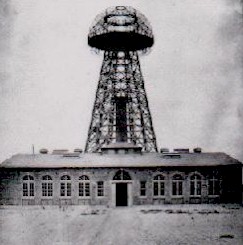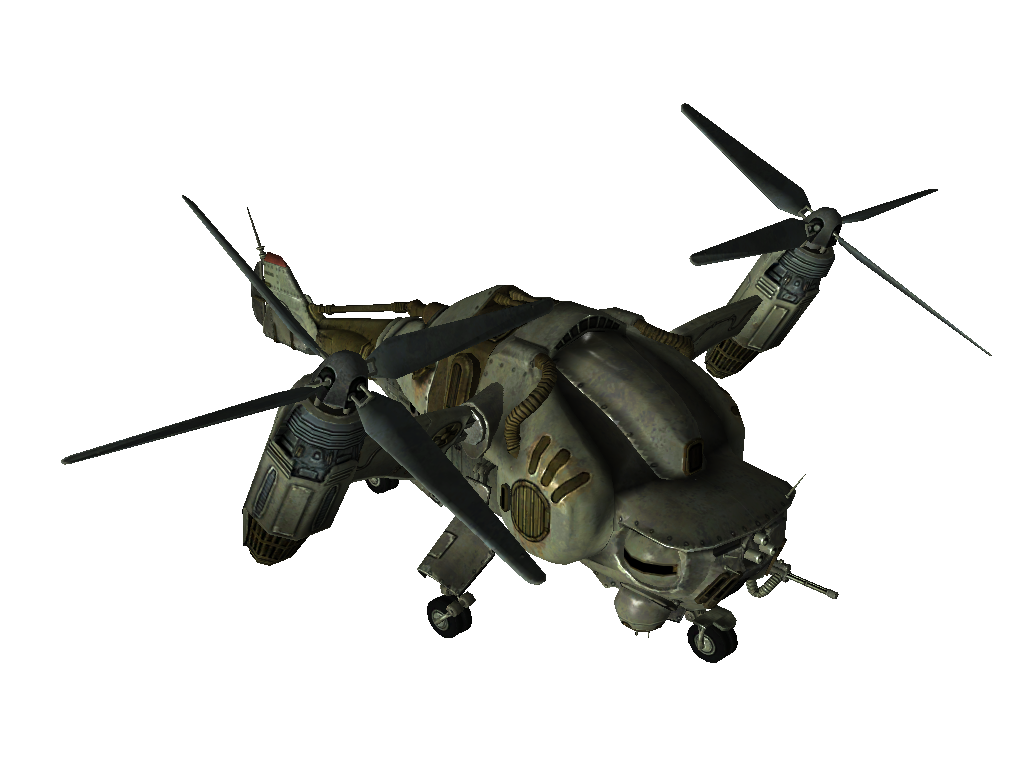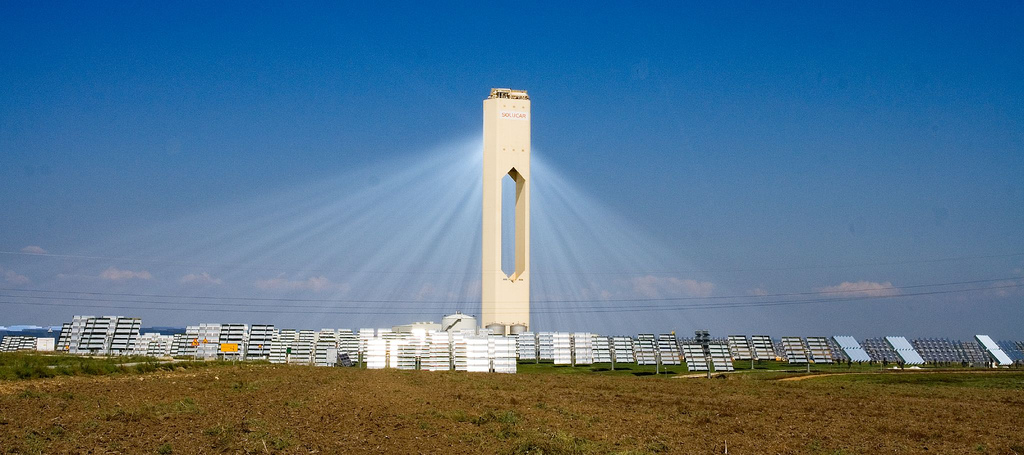http://www.mdgadvertising.com/blog/how-social-media-changed-the-ad-game-infographic/
http://www.pcmag.com/article2/0,2817,2391740,00.asp
Infographic: How Gaming Has Gone Social | News & Opinion | PCMag.com
Monday 23 January 2012
Thursday 13 October 2011
FOCUS
OK been a long time since I posted on here and its about time that I tried to reign in a proposal and gain a much more direct focus in terms of how it relates to my practice as well as my own vested interests.
In response to my tutorial with Lorraine, I cannot just use history as a focus, but as a context, which is more than fine, I think it was just because I had do so so much historical research in terms to verify using New Vegas as a basis for my universal mirror study.
She also mentioned that the hyperreality aspect works hand in hand with the interaction element, but it must have another design related element. So an easy and good way to go about this would be to look at semiotics and how it relates to the branding of products in game.
Virtual branding must have an effect on us and our purchasing habits, considering that there are so many real world products that are situated in New Vegas, just with slightly changed graphics and name changes. Nuka Cola is a prime example, the funny thing is most of the food is irradiated which supports the notion that most of our food is GM treated or something similar to a minor poison.
This aside, the amount of in game design that is relative to the propagating of products, be it interactive (food, drink, weapons, armour, clothes) or merely a place or object of high value (space shuttle, minuteman missile, HELIOS ONE, vegas strip) the effect of advertising is the same: it creates a notion of unfulfillment that can only be sated by trying the product, visiting the place or in some cases, picking up a novelty like a t-shirt or snowglobe.
So I suppose this actually holds some amount of weight considering that I could just dissect the entire Fallout inventory and do a largely semiotic grilling of it as well as elaborating on the point by putting it into some form of hyperreal context that is actually a universal mirror for pan-capitalism.
Another idea could be the focus of technology, how technology has shaped and shifted various social factions into evolution or disparity. For the elitist advancement of technology and its preservation, the Brotherhood of Steel would be the focus, whereas on a much further end of the scale would be the tribal people of Zion National Park, UT who rely entirely on their craft skills, survival skills and general know-how of their surroundings.
Although this would be a good focus, and would indeed tie in with the sort of work I am producing in my practice, I am unsure of how it could be directed back to design. Which may lead me to leave this in the ground considering I will only be looking at social theory and technological aspects which probably wont link back into my studio practice.
Once again another focus could be the propaganda that you see in game, which in itself is intrinsic to products/branding anyway as the same methods are applied, just that the imagery and tone of voice is altered slightly when dealing with products, not people.
So I think ideally it would be best to take a semiotic stance in relation to branding in fallout, as well as linking it into the hyperreal cohesion in our world.
In response to my tutorial with Lorraine, I cannot just use history as a focus, but as a context, which is more than fine, I think it was just because I had do so so much historical research in terms to verify using New Vegas as a basis for my universal mirror study.
She also mentioned that the hyperreality aspect works hand in hand with the interaction element, but it must have another design related element. So an easy and good way to go about this would be to look at semiotics and how it relates to the branding of products in game.
Virtual branding must have an effect on us and our purchasing habits, considering that there are so many real world products that are situated in New Vegas, just with slightly changed graphics and name changes. Nuka Cola is a prime example, the funny thing is most of the food is irradiated which supports the notion that most of our food is GM treated or something similar to a minor poison.
This aside, the amount of in game design that is relative to the propagating of products, be it interactive (food, drink, weapons, armour, clothes) or merely a place or object of high value (space shuttle, minuteman missile, HELIOS ONE, vegas strip) the effect of advertising is the same: it creates a notion of unfulfillment that can only be sated by trying the product, visiting the place or in some cases, picking up a novelty like a t-shirt or snowglobe.
So I suppose this actually holds some amount of weight considering that I could just dissect the entire Fallout inventory and do a largely semiotic grilling of it as well as elaborating on the point by putting it into some form of hyperreal context that is actually a universal mirror for pan-capitalism.
Another idea could be the focus of technology, how technology has shaped and shifted various social factions into evolution or disparity. For the elitist advancement of technology and its preservation, the Brotherhood of Steel would be the focus, whereas on a much further end of the scale would be the tribal people of Zion National Park, UT who rely entirely on their craft skills, survival skills and general know-how of their surroundings.
Although this would be a good focus, and would indeed tie in with the sort of work I am producing in my practice, I am unsure of how it could be directed back to design. Which may lead me to leave this in the ground considering I will only be looking at social theory and technological aspects which probably wont link back into my studio practice.
Once again another focus could be the propaganda that you see in game, which in itself is intrinsic to products/branding anyway as the same methods are applied, just that the imagery and tone of voice is altered slightly when dealing with products, not people.
So I think ideally it would be best to take a semiotic stance in relation to branding in fallout, as well as linking it into the hyperreal cohesion in our world.
Wednesday 5 October 2011
Cold War Modern: Defense
It is common to say that the effects of the cold war were primarily indirect rather than on the immediate environment or the constructed environment, as the results of the cold war is becoming increasingly visible today as more physical heritage sites are being uncovered.
In Tom Vanderbilt's book Survival City: Adventures Amongst the Ruins of the Atomic America, 2002 his terminology of 'black and white spaces' applied to these sites and areas effected by the cold war help to create a better idea of how both public and private sectors coexisted. Black areas are the secret bases, bunkers, storage facilities, silos and test sites, white were the visitable and visible places/areas open to view, Vanderbilt then says that "the existence of one not only presupposes the other, but they inevitably seep into each other, corrupting both in the process." this means that no matter what 'visible' sites appear to hold innocence to the public would undoubtedly have connections to the secret, subside of the cold war, as if the 'visible' world of progress was a sign of unstoppable capitalism and a denial to nuclear threat.
"Psychological effect of the invisible of the anxiety of annihilation in the midst of plenty"
Continuing on with Vanderbilt's terminology, we hit a grey area. (HA) Oak Ridge, Tennessee, USA was a place that had a small population and was rife with vast areas of woodland, yet almost overnight in 1942, thanks to all the new construction technologies and resources the 'Atomic City' was constructed. It was kept a secret until the war ended as it played a huge part in the Manhattan Project, as well as being heralded as "the biggest job in quick town building ever attempted in the USA"
Oak Ridge was also home to NORAD, North American Aerospace Defense Command is a United States and Canada bi-national (1954 agreement) organization charged with the missions of aerospace warning and aerospace control for North America. Aerospace warning includes the monitoring of man-made objects in space, and the detection, validation, and warning of attack against North America whether by aircraft, missiles, or space vehicles, through mutual support arrangements with other commands.
Along with NORAD, there was a military demand for an intricate system that allowed members of the US military to communicate and defend against enemy threats. This came about in the form of the positioning of Distant Early Warning Radomes, invented by Buckminster Fuller whose idea of using the newly discovered fibreglass material which could withstand great amounts of weather without causing so much as a scratch to the Radomes.
DEW for short, the line of defense created was a significant initiative of the cold war, the elctronic grid controlled by SAGE (which later contributed to air traffic control and had its roots in a lot of Tesla's inventions and proposals which were turned down by the government not only 20 years ago) was used to relay information all over the continent and soonafter, the domes were modified to create semi-autonomous sites so as to relieve staff to other duties.
The radome became a symbol of cold war corporate and militant America, contributing to the theory that America are out for full spectrum dominance over the planet, as seen when they propagated them as symbols of liberating technological progress in the war.
"The peculiar mixture of do-it-yourself improv and recycling of scrap materials with up-to-date structural systems and advanced electronics (hi-fis, Tv and film) was typical of hedonistic survivalism of the counter-culture of the second half of the 60s"
Mcluhans global village
In Tom Vanderbilt's book Survival City: Adventures Amongst the Ruins of the Atomic America, 2002 his terminology of 'black and white spaces' applied to these sites and areas effected by the cold war help to create a better idea of how both public and private sectors coexisted. Black areas are the secret bases, bunkers, storage facilities, silos and test sites, white were the visitable and visible places/areas open to view, Vanderbilt then says that "the existence of one not only presupposes the other, but they inevitably seep into each other, corrupting both in the process." this means that no matter what 'visible' sites appear to hold innocence to the public would undoubtedly have connections to the secret, subside of the cold war, as if the 'visible' world of progress was a sign of unstoppable capitalism and a denial to nuclear threat.
"Psychological effect of the invisible of the anxiety of annihilation in the midst of plenty"
Continuing on with Vanderbilt's terminology, we hit a grey area. (HA) Oak Ridge, Tennessee, USA was a place that had a small population and was rife with vast areas of woodland, yet almost overnight in 1942, thanks to all the new construction technologies and resources the 'Atomic City' was constructed. It was kept a secret until the war ended as it played a huge part in the Manhattan Project, as well as being heralded as "the biggest job in quick town building ever attempted in the USA"
Oak Ridge was also home to NORAD, North American Aerospace Defense Command is a United States and Canada bi-national (1954 agreement) organization charged with the missions of aerospace warning and aerospace control for North America. Aerospace warning includes the monitoring of man-made objects in space, and the detection, validation, and warning of attack against North America whether by aircraft, missiles, or space vehicles, through mutual support arrangements with other commands.
Menwith Hill, Harrogate, UK
DEW for short, the line of defense created was a significant initiative of the cold war, the elctronic grid controlled by SAGE (which later contributed to air traffic control and had its roots in a lot of Tesla's inventions and proposals which were turned down by the government not only 20 years ago) was used to relay information all over the continent and soonafter, the domes were modified to create semi-autonomous sites so as to relieve staff to other duties.
The radome became a symbol of cold war corporate and militant America, contributing to the theory that America are out for full spectrum dominance over the planet, as seen when they propagated them as symbols of liberating technological progress in the war.
"The peculiar mixture of do-it-yourself improv and recycling of scrap materials with up-to-date structural systems and advanced electronics (hi-fis, Tv and film) was typical of hedonistic survivalism of the counter-culture of the second half of the 60s"
Mcluhans global village
Friday 9 September 2011
Cold War Modern: Architecture
Finally got my copy of Cold War Modern Design 1945-1970 (V&A) delivered today which has not only patched up alot of my dissertation research but offered a much better perspective and contextualized approach to the subject matter. Although the majority of the content is art focused, there is a considerable amount on the cultural, ideological and political mechanisms behind the Atomic Age and the Modern Movement which is essential to my essay.
In the chapter Europe Reconstructed, Europe Divided p42/43 the main focus is on the reconstruction of the war torn countries that were in need of rebuilding their societies based upon the post-war mindset, which differed amongst the countries and their context to the war.
It predominantly focusses on the communist and capitalist ideologies that were causing conflict in some of eastern Europe, especially countries like Russia where the magnificence of communism was required to be implemented into the architectural structure of the major cities. Soviet buildings did not reflect the underlying/predominant ideal that communism was a force that is pushing its society into the new, "long formal avenues with monumental sculpture and buildings dressed with classical columns and lintels - hardly a vision of the future."
However, the menace of modern architecture was coming from America, following a large smear campaign by the Eastern Bloc - which America realistically pushed the boundaries for modernity - particularly in Germany in 1954 the Handbuch Fur Architekten spoke out against this capito-imperial menace, "As in other capitalist countries, building is predominantly formalist and subordinated to the cosmopolitan ideology of American Imperialism". Architecture is replaced with mere construction, with no real focus on the elegance or aesthetics of buildings but only on their functionality within the emerging movement that hid the 'cold face of capitalism' in the following building plans.
This echoed the 'war psychosis' that followed the war, mass paranoia and panic within the ranks of the military where the military industrial needs were put as priority over the standard social needs of the general populace, this is evident when considering the Danube Steelworks case.
In the chapter Europe Reconstructed, Europe Divided p42/43 the main focus is on the reconstruction of the war torn countries that were in need of rebuilding their societies based upon the post-war mindset, which differed amongst the countries and their context to the war.
It predominantly focusses on the communist and capitalist ideologies that were causing conflict in some of eastern Europe, especially countries like Russia where the magnificence of communism was required to be implemented into the architectural structure of the major cities. Soviet buildings did not reflect the underlying/predominant ideal that communism was a force that is pushing its society into the new, "long formal avenues with monumental sculpture and buildings dressed with classical columns and lintels - hardly a vision of the future."
However, the menace of modern architecture was coming from America, following a large smear campaign by the Eastern Bloc - which America realistically pushed the boundaries for modernity - particularly in Germany in 1954 the Handbuch Fur Architekten spoke out against this capito-imperial menace, "As in other capitalist countries, building is predominantly formalist and subordinated to the cosmopolitan ideology of American Imperialism". Architecture is replaced with mere construction, with no real focus on the elegance or aesthetics of buildings but only on their functionality within the emerging movement that hid the 'cold face of capitalism' in the following building plans.
This echoed the 'war psychosis' that followed the war, mass paranoia and panic within the ranks of the military where the military industrial needs were put as priority over the standard social needs of the general populace, this is evident when considering the Danube Steelworks case.
Moving on a little bit to 1952, when the Stalin-Allee was opened, it was meant to be a palace/place of refuge and pride for the workers of the state to reside in. Instead it demonstrated the government's prioritization of housing schemes that demoralized the public rather than motivating them, it revealed the ideological values of the social strata.
Stalin-Allee could be compared to the Fallout Universe's 1952 US Governmental scheme Project Safehouse that exploited the country's need for safe housing, with a promise of modernity and a secured future in which to live. Instead they turned out to be a large series of botched social experiments which mirrors that of what we see here; a change in domestic arrangements and a change in social dynamics.
America with its ears ever present in most of the conversations occuring worldwide, sensed this paradigm shift and started a European tour with their 'living exhibitions' which were used to demonstrate the simple, elegant functionality of a modern living environment.
"Domestic appliances were used to forge connections between individualism reconstruction and consumerism"
It started in the late 40's/early 50's where American companies/governments/corporations would openly invite architects, planners, engineers and other technocrats on extensive study tours to North America which some of the technocrats would be offered jobs or contracts which obviously influenced the designs and products the Americans were eager to sell. Leo De Jonge (architect from Netherlands) was one of these people touring:
"I was not pro-American. And I thought that a lot of the trip was pure propaganda, our presence was supposed to sell the American people on the idea that so much money was going to Europe." which it obviously wasnt, despite the need for rebuilding in Europe the American Dream was still willing to conform to its exploitative, capitalist endeavours.
Conrad Hilton (of HIlton Hotels) gives a shining example of this, in the late 1950's, when US businesses sought to capitalize on the economic recovery, Hilton wrote in his autobiography that each of his hotels were a 'laboratory' that people could 'inspect America and its ways at their leisure'. Describing international hotels - such as the Berlin Hilton - and those in areas considered 'hot' by the cold war as 'bulwarks against the communist threat' but the reality was that a more visible Americanization of the European cityscapes occurred, with corporate headquarters and air-conditioned hotels.
Moving away from America and its plentitude, we now look at a much more cohesive basis for Project Safehouse; Unite d'Habitation in Marseilles which was essentially a 'social condenser' inspired by previous soviet architectural designs, it was meant to produce new socialized domestic spaces that could either destroy or isolate the private world of the bourgeoisie,"the cultural cold war forged weapons from modern home furnishings" it boasted a whole host of services and commodities such as a swimming pool, launderette and a daycare centre which would have easily provided the standard of living needed in modern society. A complete world, offering the community services needed for modern living - 'a monument in which everyday life of the home is elevated to the level of public monument' by means of creating a visual, social and cultural landmark that will forever be embedded in the population's mind just like those structures that mark the monumental loss of life, but instead perpetuate a capitalist ideal with a neo-imperialist overtone.
Tuesday 23 August 2011
Sunday 10 July 2011
America aciremA
I bought and have started to read through America by Jean Baudrillard (1) in order to support opinions of my own as well as offer up a more in depth critique of the subject I am studying.
When Baudrillard arrived in San Diego in 1975 he was there to keep with and update Robert Frank's mission statement, 'that California was a testing ground of simulation'(2) the experimental side of which was found in the desert. From previous research and posts, this becomes self evident of the American psyche, which better place to test or simulate man's ideas of destruction, creation and replenishment of natural resource?
Baudrillard found on his travels that the vast, arid desert was becoming his heartland, as an absolution from 'historical or cultural comparison' thus renunciating the idea of American culture which in The Americans (Robert Frank 1958) is apparently 'born here and spreading everywhere', the New World - as America used to be called - held a view of their country being the New Europe.
As Donald Rumsfeld famously referred to the UK and Europe as Old Europe (3), a stance of bad attitude inherited from the second World War that Americans occupy the highest moral ground in every aspect of cultural endeavour, whereas in the earlier years of the country's birth, America often gazed at the supremacy of culture and sophistication that was Europe.
This is highlighted in almost every film ever made, the increasing or pent up paranoia of persons in authority as well as the conditioned masses.
After much research into both timelines, comparing what events link to other events, I have opened up an even bloodier side to the US that I was ignorant of until I found out about it all. Mainly looking at the birth of the free market, shock economy, Tesla experiments, and the progression of military projects, its hard not to find something that is referenced to on Fallout: New Vegas, especially in some of the chapters in America.
I had a choice between Fallout 3 which was set in Washington DC or Vegas, however seeing that Vegas was more of a 'utopia' of greed and the by-product of the 'American way of life' I thought that it would be the more appropriate option this as well as the abundance of quotes and opinions shared by Baudrillard it became apparent that this was the logical choice.
Mormons play a huge part in the Fallout universe, as the founding fathers of the Legion were Mormons, as well as a section of the faith branching off to form the Followers of the Apocalypse, a humanitarian faction who "don't worship so much as follow a set of principles. We want to bring peace back to this wasteland. The world tends toward destruction, so we try to make a difference.' which fundamentally follows the original christian values without the extreme action of a fundamentalist religious sect. They often offer their services to stranded wastelanders or roamers regardless of creed, colour or belief which as Baudrillard so eloquently put 'It is the capitalist, transsexual pride of a people of mutants that gives the city its magic, equal and opposite to that of Las Vegas, that great whore on the other side of the desert.'
I leave you with a fantastic quote from America, and the trailer that fits perfectly and could have been composed by the man himself:
"There is nothing more mysterious than a TV set left on in an empty room... Suddenly the TV reveals itself for what it really is: a video of another world, ultimately addressed to no one at all, delivering its images indifferently, indifferent to its own messages (you can easily imagine it still functioning after humanity has disappeared)"
(1) J. Baudrillard (1988) Verso publications, British Library Cataloguing in Publication Data
(2)
When Baudrillard arrived in San Diego in 1975 he was there to keep with and update Robert Frank's mission statement, 'that California was a testing ground of simulation'(2) the experimental side of which was found in the desert. From previous research and posts, this becomes self evident of the American psyche, which better place to test or simulate man's ideas of destruction, creation and replenishment of natural resource?
Baudrillard found on his travels that the vast, arid desert was becoming his heartland, as an absolution from 'historical or cultural comparison' thus renunciating the idea of American culture which in The Americans (Robert Frank 1958) is apparently 'born here and spreading everywhere', the New World - as America used to be called - held a view of their country being the New Europe.
As Donald Rumsfeld famously referred to the UK and Europe as Old Europe (3), a stance of bad attitude inherited from the second World War that Americans occupy the highest moral ground in every aspect of cultural endeavour, whereas in the earlier years of the country's birth, America often gazed at the supremacy of culture and sophistication that was Europe.
This is highlighted in almost every film ever made, the increasing or pent up paranoia of persons in authority as well as the conditioned masses.
After much research into both timelines, comparing what events link to other events, I have opened up an even bloodier side to the US that I was ignorant of until I found out about it all. Mainly looking at the birth of the free market, shock economy, Tesla experiments, and the progression of military projects, its hard not to find something that is referenced to on Fallout: New Vegas, especially in some of the chapters in America.
I had a choice between Fallout 3 which was set in Washington DC or Vegas, however seeing that Vegas was more of a 'utopia' of greed and the by-product of the 'American way of life' I thought that it would be the more appropriate option this as well as the abundance of quotes and opinions shared by Baudrillard it became apparent that this was the logical choice.
Mormons play a huge part in the Fallout universe, as the founding fathers of the Legion were Mormons, as well as a section of the faith branching off to form the Followers of the Apocalypse, a humanitarian faction who "don't worship so much as follow a set of principles. We want to bring peace back to this wasteland. The world tends toward destruction, so we try to make a difference.' which fundamentally follows the original christian values without the extreme action of a fundamentalist religious sect. They often offer their services to stranded wastelanders or roamers regardless of creed, colour or belief which as Baudrillard so eloquently put 'It is the capitalist, transsexual pride of a people of mutants that gives the city its magic, equal and opposite to that of Las Vegas, that great whore on the other side of the desert.'
Followers of the Apocalypse Logo
Legion Logo
( I will touch upon Desert for Ever as I have yet to read its entirety )
Baudrillard begins to explain the genealogy of the desert in all its primal forms, stating that 'meaning is born out of the erosion of words, significations are born out of the erosion of signs', this in essence refers to the denaturalisation of sites/areas that were once ancient sedimentations but repressed by humans to cultivate meaning: Natural Parks (Grand Canyon)
Funnily enough, Baudrillard has written paragraphs on some of the places that are intrinsic to the Fallout story.
Salt Lake City:
The Mormon's Makkah, a heartland of wealth, rich-living, puritanical conquistadors that have their own law, constitutions and an archive of desert tunnels that predate the American acquisition of land.
Alamogordo:
Is the site of the first atomic bomb testing, miles of White Sands composed against the pale blue skyline of mountains, peace only disrupted with a trigger that 'the blinding artificial light of the bomb against the blinding light of the ground'.
Torrey Canyon:
Is home to the Salk Institute, home of all of the Nobel Prize winners for biology as well as the 'Minos... Palace...' for future biological breakthroughs that is constantly redefining the commandments of contemporary biology.
Baudrillard then goes on to comment on these sites as 'capitals of fiction become reality' as the sublime and extraterritoriality along with the earth's geological grandeur combine together with man's nuclear, orbital, high grade computer technology. This gives footing to the constant changing, yet unyielding nature of the desert, the inhumanity of mankinds ulterior, superficial world suddenly finds its aesthetic form: the ecstatic form of disappearance.
I leave you with a fantastic quote from America, and the trailer that fits perfectly and could have been composed by the man himself:
"There is nothing more mysterious than a TV set left on in an empty room... Suddenly the TV reveals itself for what it really is: a video of another world, ultimately addressed to no one at all, delivering its images indifferently, indifferent to its own messages (you can easily imagine it still functioning after humanity has disappeared)"
(1) J. Baudrillard (1988) Verso publications, British Library Cataloguing in Publication Data
(2)
Thursday 7 July 2011
Nikola Tesla: Godfather of Modern Physics
 “The spread of civilization may be likened to a fire; First, a feeble spark, next a flickering flame, then a mighty blaze, ever increasing in speed and power.” - Nikola Tesla
“The spread of civilization may be likened to a fire; First, a feeble spark, next a flickering flame, then a mighty blaze, ever increasing in speed and power.” - Nikola TeslaNikola Tesla was an incredibly influential physicist who was born in the wrong time period, viewed as an eccentric in his later years for his seemingly controversial inventions and experiments such as the Death Ray (which influenced generations of sci-fi fans)
Tesla's importance to both worlds is huge to say the least, starting out as Edison's apprentice then rapidly overtaking him in the field of physics, for example the war between AC and DC (Alternating Current and Direct Current, Tesla's was AC) which inevitably sparked off Tesla's career and the start of a new era for motor and electrical systems worldwide.
In February 1882, Tesla discovered the rotating magnetic field which led onto the A.C. induction motor then his polyphase alternating current system used to light the world today and started the industrial revolution at the turn of the century.
Amongst a host of other inventions and breakthroughs Tesla is the father of tv, radio, flourescent lights, laser beam, remote control, wireless transmission of electricity, robotics and vertical take off aircraft as well as foreseeing interplanetary communications and satellites. Fallout is based around Tesla's inventions all working as expected and his physical theories were correct, these include the Vertibird, Laser Rifle, Power Armor, HELIOS 1 and Mr Handy, to name a few.
Vertibird
Laser Rifle
HELIOS 1
Helios 1 is a good example of Tesla's great vision for the world to have a sustainable, renewable energy source that has no negative impact on the environment except during its construction. Tesla had visions not only to utilise the sun, but was the first to propose wind and hydroelectrical power as a versatile means to end/cut down on fossil fuels, being a man dedicated to inventing for the better of mankind his view was that.. 'Science is but a perversion of itself unless it has as its ultimate goal the betterment of humanity.'(1)
This state of mind is constantly referred to within the entirety of the Fallout series, many of the characters talk of him as some sort of god whereas all the ex-US government affiliated personnel disregard him as a fraud, yet hail Hertz and Marconi as the true pioneers of physics.
However, there is truth in HELIOS 1, because in spain there is a fully operational solar power station in Andalucia, which is more or less exactly the same as the one in Fallout...'With a power capacity of 20 megawatts, double that of PS10, PS20 should produce enough clean energy to supply 10,000 homes.' This power alone would be sufficient enough to power a bleak New Vegas strip and even a half cocked military base in the desert, which can transmit vast amounts of electrical energy wirelessly over vast distances, not too dissimilar from Tesla
Although it is most probably Nevada Solar One a huge sprawling solar power station situated east of Barstow, CA, USA which was the first test of a large-scale thermal solar power tower designed by the Department of Energy and proposed for construction by Southern California Edison, but doubles up as a relay to orbiting satellites such as Europe's first military optical recon satellite, Helios 1A.
This is referenced in Fallout when the player first finds HELIOS 1, the atmospheric phenomenon created by dust particles and the light are clearly visible, leading the player to a series of access terminals allowing the player to take control of the power station, giving access to its unique orbital death ray and to channel the energy to various areas of the Mojave Wasteland.
Although it is most probably Nevada Solar One a huge sprawling solar power station situated east of Barstow, CA, USA which was the first test of a large-scale thermal solar power tower designed by the Department of Energy and proposed for construction by Southern California Edison, but doubles up as a relay to orbiting satellites such as Europe's first military optical recon satellite, Helios 1A.
This is referenced in Fallout when the player first finds HELIOS 1, the atmospheric phenomenon created by dust particles and the light are clearly visible, leading the player to a series of access terminals allowing the player to take control of the power station, giving access to its unique orbital death ray and to channel the energy to various areas of the Mojave Wasteland.
References:
http://www.solaripedia.com/13/31/solar_one_and_two_(now_defunct).html
http://aboutfreeenergy.com/
http://www.teslaenergy.org/intro5.html
Subscribe to:
Posts (Atom)









